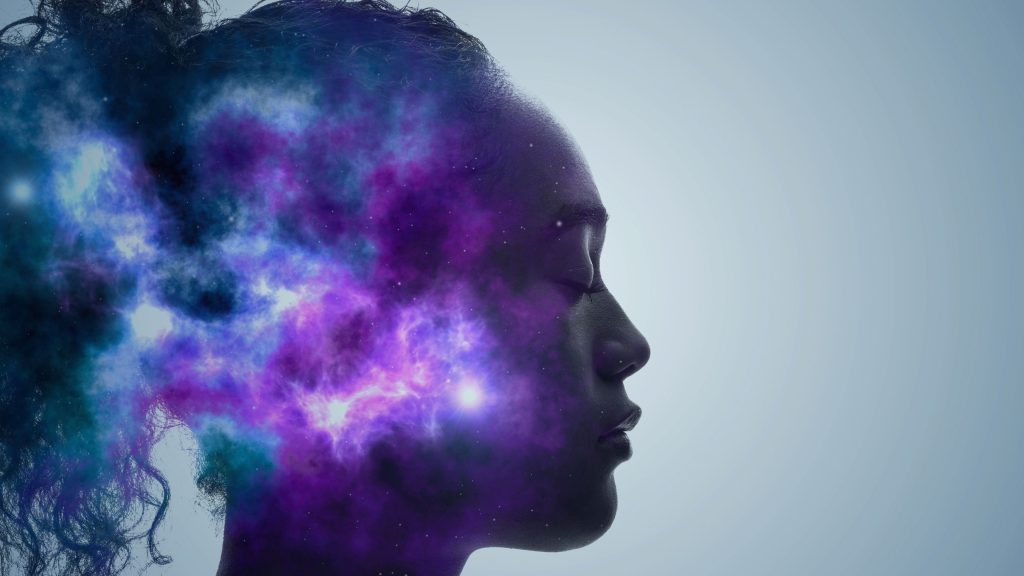What is the most ancient language of mankind? What is the language spoken by all human beings, across all geographic locations and cultures? If you think it’s some made-up gibberish or a fictional language from Harry Potter, you are partially right. But if you think it’s something like Elvish from Lord of the Rings or Klingon from Star Trek, then you are terribly wrong. The most ancient and universal language known to humanity today is Sanskrit. In fact, any other language that you might think of as more ancient than Sanskrit was derived from this Vedic language of India.
Sanskrit is a high-vibration, expanded, light-filled language that can help to improve your body, mind, nerves, and life. Let us explore why as well as how neuroscience and the study of Sanskrit intersect in understanding the complexities of human consciousness.
What is Sanskrit?
Sanskrit is an Indo-Aryan language, which is the mother of all Indo-European languages. It is the liturgical language of Hinduism and was the language of knowledge and discourse in India for over 3,500 years. It is also referred to as a “scientific language” because it is the most precise and accurate language in the world. The precision and accuracy of Sanskrit is such that it can be used to describe both material and spiritual phenomena with the same accuracy and precision. As a result, it is the most appropriate language for the study of spirituality, consciousness, and meditation – both from the side of the aspirant and from the side of the scientist. Sanskrit is a complete language in the sense that it can be used to express the full range of human experience, including the scientific and philosophical. Its precision, accuracy, and clarity make it ideal for communicating subtle ideas, such as those in the study of neuroscience and consciousness. Sanskrit is also a highly efficient language – expressions that would take 10 words in English take only three words in Sanskrit.
How is Sanskrit related to Neuroscience?
The word “neuroscience” is defined as the scientific study of the nervous system, including the brain. The human nervous system is the most complex structure of the human body. It is responsible for the sensory perception, cognitive functions like thought and language, motor functions like speech and physical activity, and controlling the internal organs. The human nervous system is incredibly expansive. It has around 100 billion neurons, and each neuron can form 10,000 synaptic connections. The human body has around 1,000 trillion synapses, which is about the same number as there are stars in the Milky Way. The brain, which is responsible for maintaining all the functions of the nervous system, is the most complex organ in the human body. It weighs about three pounds and is made up of grey matter and white matter, a combination of neurons and their connecting fibers. The human nervous system has been the subject of scientific research for a long time. The ancient sages of India were also curious about human consciousness and explored understanding the human nervous system through yogic practices. Yogic practices are the oldest and most authentic way to understand the human nervous system. The modern scientific study of the nervous system is based on the same principles that were first explored by the yogis of India. The modern neuroscience and the ancient yogic understanding of the nervous system are very similar.
How has the study of Sanskrit helped us understand the human brain?
The study of Sanskrit is the study of the workings of the human mind and brain. In fact, many scientists have argued that studying Sanskrit is a better way to understand the brain than other modes of scientific research. The ancient yogis of India were deeply curious about how the human mind works. They observed and experimented with their own minds through yogic practices, meditation, and the study of their own consciousness. They also explored the nature of language, words, and the relationship between sound and the human mind. The ancient yogis of India discovered that the human mind responds to sound in a very specific way – the vibrations of sound (in the form of words) resonate with the energy patterns in the brain, thereby creating a particular state of mind. This is known as the “science of sound” or “shabd yoga”. The ancient yogis of India discovered that, in the same way that different words resonate with different energy patterns in the brain, different Sanskrit sounds resonate with different energy patterns in the brain.
Why should we care about studying Sanskrit and Neuroscience together?
The ancient yogis of India discovered that Sanskrit is the most precise and accurate language in the world. It was designed in such a way that every word, sound, and phrase has multiple layers of meaning. The ancient yogis discovered that each Sanskrit word is associated with a particular energy pattern in the brain. They also discovered that, through the science of sound, the vibrations of Sanskrit words can be used to change the energy pattern in the brain. The modern scientists have only recently begun to understand and appreciate the true power of Sanskrit. In recent years, there has been a significant increase in research into the relationship between the brain and Sanskrit. This research has led to some fascinating discoveries.
Conclusion
The human nervous system is the most complex and intricate structure of the human body. It is responsible for all sensory perception, motor functions, and the regulation of internal organs. The brain, which is responsible for maintaining all the functions of the nervous system, is the most complex organ in the human body. The study of Sanskrit is the study of the workings of the human mind and brain. In fact, many scientists have argued that studying Sanskrit is a better way to understand the brain than other modes of scientific research. The ancient yogis of India were deeply curious about how the human mind works. They observed and experimented with their own minds through yogic practices, meditation, and the study of their own consciousness. They also explored the nature of language, words, and the relationship between sound and the human mind. The ancient yogis of India discovered that the human mind responds to sound in a very specific way – the vibrations of sound (in the form of words) resonate with the energy patterns in the brain, thereby creating a particular state of mind. This is known as the “science of sound” or “shabd yoga”. The ancient yogis of India discovered that, in the same way that different words resonate with different energy patterns in the brain, different Sanskrit sounds resonate with different energy patterns in the brain. The modern scientists have only recently begun to understand and appreciate the true power of Sanskrit.
Shri Krishna & The Shankara Experience
Shri Krishna is a loving spiritual master, teacher, personal guide, clairvoyant, empath, and mystic. He has served thousands of earnest seekers by providing profound answers to their challenges and actionable guidance toward their Self-mastery. He helps spiritually-minded souls connect with their vast, expanded inner Selves to navigate any situation, transcend any circumstance, and liberate in every moment.
Shri Krishna’s mission is to help others source their boundless creativity and joy, embody virtue, heal the depths of their Beings, find the most resounding clarity, and master their lives. He created the divine portal Shankara as a living, relatable oracle to help humanity build inner pathways to The Unlimited, All-Knowing, All-Conscious Universe.
Shri Krishna created The Shankara Experience ™ at TheShankaraExperience.com.
Visit ShriKrishna.com to connect and learn more.


